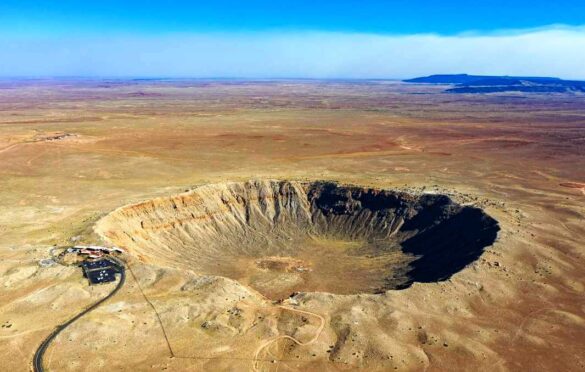What is Meteor Crater?

Meteor Crater (also once called the Barringer Meteorite Crater), located just outside of Winslow, Arizona, is a huge, almost one-mile- (1.6- kilometer) wide and 700-foot- (213-meter-l deep hole thought to have been formed by a stony asteroid striking the Earth. Although the area is now desert, the space body struck the surface about 49,000 years ago when the surrounding landscape was covered with forests. The impact ripped up and overturned the surrounding sandstone, creating a ISO-foot-high (46 meter) rim of jumbled and smashed boulders, some of them larger than a house. Scientists estimate that the asteroid was about 150 feet (46 meters) in diameter, weighed about 300,000 tons, and was traveling about 40,000 miles (64,374 kilometers) per hour.
When the crater was first discovered, most scientists believed it was volcanic in origin, even though over 30 tons of iron meteorites were found within a radius of 8 to 10 miles (13 to 16 kilometers). It took until about 1963-in a landmark paper presented by geologist Eugene Shoemaker to present evidence that proved the crater was formed by an impact. Since that time, other tell-tale signs have been uncovered, including rock structures called shattercones (coneshaped features created by intense pressure on local rock); shock lamellae, or minute quartz grain cracks caused by an impact; and coesite and stishovite, two materials that do not form naturally on Earth, but can form from the intense pressures and heat from an impact.
